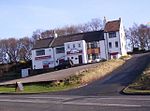Sunniside, Gateshead
Sunniside is a village in the Metropolitan Borough of Gateshead, which is located around 5.5 miles (9 km) from Newcastle upon Tyne. Prior to the creation of the county of Tyne and Wear in 1974, it was part of Whickham Urban District, which in turn formed a part of County Durham.Sunniside has a busy Front Street, with a collection of pubs, shops, and amenities. The village is surrounded mainly by farmland, with plantations of trees to the east, whilst also neighbouring the villages of Byermoor, Marley Hill and Whickham. The village is mostly housing, with older terraced properties situated near to the shops, and large housing estates built from the 1960s onward radiating from this area. It has a large park to the north of the village, next to Burnthouse Lane. Attractions near to the village include Beamish Museum and Tanfield Railway. The A692 road runs directly through the centre of the village and is used by many transport companies as a direct route to the town of Consett: this road carries some of the heaviest traffic through the borough of Gateshead daily. There have been a lot of private housing developments in the village of Sunniside, between 2017 and 2021, leading to increases in population and traffic. Sunniside has one of the highest rates of community council tax in the country (including London)
Excerpt from the Wikipedia article Sunniside, Gateshead (License: CC BY-SA 3.0, Authors).Sunniside, Gateshead
Waskerley Close,
Geographical coordinates (GPS) Address Nearby Places Show on map
Geographical coordinates (GPS)
| Latitude | Longitude |
|---|---|
| N 54.926 ° | E -1.682 ° |
Address
Waskerley Close
Waskerley Close
NE16 5XE
England, United Kingdom
Open on Google Maps




